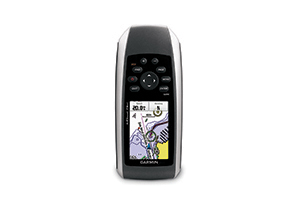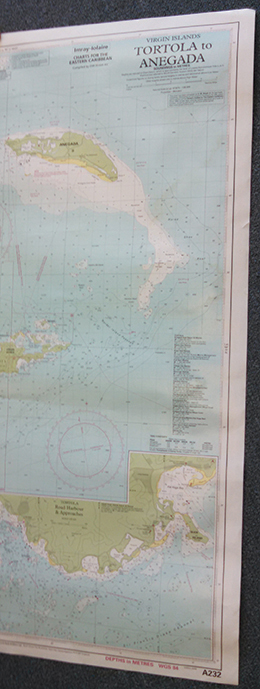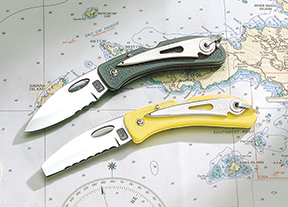Essential things every sailor should bring along when sailing on someone else’s boat (published December 2014)
By now, the contents of a sailor’s ditty bag have been thoroughly discussed in countless articles. Every sailor knows how many hats—and what kind—they should bring, ways to sort and separate wet and dry clothing, and which personal mugs, water bottles, etc, work best.
But none of this will help if you find yourself aboard a boat with unfamiliar, faulty or outright missing pieces of essential gear. It’s all too common to jump aboard a friend’s boat, a charter vessel, or to join an ad-hoc crew, only to find out after the first watch change that the boat is lacking in certain essential pieces of gear. With any luck the vessel is generally safe—because you did at least check for basic seaworthiness before agreeing to board, right?—but it’s often little things added up that can make the difference between a great trip and frankly not arriving at all.
So, stepping beyond the basic ditty bag, here’s a list of items I consider absolutely essential before I board anybody else’s boat for pretty much anything more than a day sail around the harbor. Feel free to modify this list to suit your own level of comfort and preparedness and realize this is a minimum kit. I will take more than this if I have ultimate responsibility for the voyage as skipper or if I have knowledge that a particular passage may require specific gear.
GPS with backup batteries: I carry one of these on every trip I take. I dislike having to learn someone else’s navigation gear, and I like having a backup that I know works. My current favorite is the Garmin GPS 76. It is an older model that is built like a tank and just works, but any solid, waterproof, floating model with a good reputation is fine. I don’t care about charts on my GPS; it’s yet another pack of charts to buy and they are slow and annoying to use. For charts I pack paper and my iPad.
Hand bearing compass: There seem to be two kinds of hand bearing compass folks, Plastimo fans, and Steiner/Vion loyalists. I fall into the latter camp as it’s smaller to pack, has no parallax error and is durable. Nevertheless, they both work just fine if you know how to use them. These seem to be inevitably missing aboard most boats and it’s always a good idea to have your own, especially when it fits perfectly in your foulie pocket where it is always close at hand.
Binoculars: Along with the compass, I also carry my own pair of binoculars with me. Especially useful when sailing in coastal waters, binoculars are absolutely essential for pilotage, for identification or hailing of vessels not displaying AIS and for checking out that funky looking wave pattern in the harbor opening. Exactly what specification of binocular is really up to you, but I recommend trying a bunch. I’ve had absolutely terrible luck with cheap binoculars, so in my mind it is better to get a smaller but very high quality pair than large, impressive-seeming, “value-priced” binocs. Binoculars with a quality bearing compass are even better but beware of the cheap ones, the compass may be inaccurate, slow to respond or simply impossible to see.
Two flashlights and extra batteries: Ask anyone who knows me and I’m an absolutely unapologetic gear snob when it comes to stuff that I might quite literally depend on working in the worst of conditions. Flashlights fall into that category. I haven’t found a flashlight brand that I recommend without any reservation whatsoever, but I can say this: buy a top-quality military-spec flashlight, not the so-called “mil-spec” knockoffs or those aluminum-cased lights sold at the local hardware store. Streamlight, Surefire and Pelican are known to make excellent gear. You will pay for them, but you’ll be glad you did. Just in case, though, I carry two LED flashlights that both use the same CR123 lithium batteries and enough spares for both lights. I tend to carry one light and use it exclusively, keeping the other as a spare.
Headlamp: In addition to the hand lights I carry, a headlamp is another piece of kit I can’t do without. Get a quality, lightweight, fully waterproof one with replaceable batteries that stays on your head in all situations and has a red light option as well. When it comes to buying one, if you have a choice between a couple of models, get the one that is faster to put on your head blindfolded and upside down. You won’t regret it when you’re fumbling around in the dark getting slammed from beam to beam trying to find your boots when it’s your turn to get on watch in a squall.
Simple, easy-to-use blunt-point knife: Get one suitable for everything from vegetable peeling and rudimentary prep work to slicing lines in half. I recommend knives with a generous section of un-serrated blade for clean cuts. I carry both a Myerchin and a Boye sheepsfoot folder. The Boye is always on me when I’m on deck and the Meyerchin is at hand as a backup and usually stays in my foulie jacket pocket. Stainless isn’t necessary, but keep any seagoing knife clean and salt-free. Lightly oil it with quality knife oil after washing. And keep it sharp!
Handheld VHF radio: A rechargeable, waterproof, floating handheld VHF radio is indispensable, so long as it has freshly charged batteries. Pick your favorite. These don’t need to be very expensive to work as well as any other. For longer trips pack the charger, too. I have found problems with radio installations on more boats than not, sometimes bad enough that my handheld gave me better service. The usefulness of this extra radio cannot be understated. In busy harbors, it’s helpful to be able to listen to multiple channels at once or to have an extra radio station onboard. At very low power on an empty channel I’ve used them as two-way communication between the bow and the helm. Of course, the provisioning crew ashore might also need some way to call for a lift on the return trip, or you might want to call them to pick up that extra bottle of tonic and a couple limes.
Strobe (for your harness/PFD): I can’t say this enough: if you go in the water underway you have a very low chance of getting out. Keep it as high as possible by wearing a good quality marine strobe.
A refillable, water-resistant lighter: I use this for sealing line ends, starting the stove if the igniter fails or the matches get soaked, and to seal up heat shrink tubing for electrical repairs. Every time I’ve forgotten this, I’ve needed it. I use a butane lighter, but those based on lighter fluid are perfectly fine, too. Store those in a Ziplock bag to help keep the lighter fluid from evaporating and bring a small bottle of extra fluid if you plan to use it frequently.
Tape: Not glamorous, but you’ll find a zillion uses for this stuff. I use gaff tape sold for theater and film lighting but any solid, cloth-backed, easy-to-tear durable tape will work—if you can find tape with a waterproof adhesive that’s even better. There is an infinite amount of uses for this stuff and I’m always glad I brought it.
Small personal first aid kit including tweezers: I don’t know about you, but when I get a splinter at sea (and it seems that for whatever reason there’s one on nearly every voyage) I’m always finding that the onboard kit doesn’t have tweezers, or if it does they aren’t worth the space they take up. In my mind, the Sliver Gripper precision tweezers are the only tweezers worth having, period. I haven’t seen a better pair, and pretty much couldn’t imagine one.
Other items in your personal first aid kit will be up to you, as this isn’t intended for the ship’s crew. Instead, it is made up of things you are always tired of other people not having. I typically have quality waterproof bandages, zinc ointment, Advil and a few alcohol prep pads along with a variety of other things. It has grown to become a well-equipped kit, largely due to the dearth of decent supplies on many vessels.
Pocket sail repair and sewing kit: I make mine with a few meters of sail repair tape (usually in an obscenely bright color so it’s clear where the repair needs to be made later on and so the kit is easier to find in my bag), a spool of waxed twine, a pack of needles and a Speedy Stitcher. A Ziplock bag keeps things organized. I have also begun including a couple feet of aluminum foil folded into a tight, thin square. The foil can be used as a reflector, a cup, pot, plate and for a host of other possible uses. It is pretty amazing stuff, even if it’s not directly related to sail repair.
A multi-tool: This is useful for undoing stuck shackles, tightening that squeaky widget, etc. Most ship toolkits are sorely lacking and you’ll surely need to fix something during your trip that you likely won’t have the tool for. Of course, these are universally the wrong tool for every job, but when all you have is a hammer…
Waterproof camera and charger: Who hasn’t forgotten a camera on a trip and had your friends take all the shots and then only sent you the ones they liked—if they remembered to send them at all? Don’t let that happen to you. Sure, it’s not survival, but an important part of taking the trip at all is the memories we’re left with after.
Everything in the above list is part of my absolute minimum kit, but I usually bring the following with me as well, certainly on longer trips or when I’m taking on navigational responsibilities:
PLB/AIS Personal Transponder: A PLB or AIS Personal Transponder doesn’t only offer an increased level of personal safety in case of crew overboard situation, but can be a last-ditch distress signal for the whole craft. Watch out, though, as they have far shorter battery life and often very reduced signal reach from in the water compared to the larger EPIRBs/SARTs with better antennas and batteries. Still, you’ll know there is at least one on board if you’re the one who brought it.

SPOT tracker: If a PLB is a bit too much, consider a SPOT tracker. I have a personal tracker device that I use on longer passages or in remote destinations to send “OK” messages back home to let my family know where I am and that all is well. I don’t consider it as competent as an EPIRB or PLB for marine distress situations but it’s inexpensive and works well for what I use it for.
Set of fids: I’m a bit of a marlinspike seaman and enjoy everything from a well-executed splice to the simple pleasure of miscellaneous coxcombing. So I keep a set of fids along, mostly for my own entertainment. Every now and then, though, they really come in handy.
Lead Line: Simple to make with a diving weight and measured line, this is an indispensable tool that is useful in many situations. It works with the dinghy when sounding a potential anchorage or pass, it works as a backup to the onboard sounder and practicing using it is a good pastime if there are lots of hands on watch and not much to do. I’d bring a walker log with me too, if I had one.
 Small-scale paper chart of the entire area: If you have any remote expectations of navigation responsibilities, this should be an absolute requirement. A small-scale chart is pretty inexpensive, and, when combined with even the most basic GPS, can tell you where you are in a hurry in any weather, should that become questionable. I’m not suggesting this as a replacement for other more responsible navigational equipment, but even if I’m not the skipper, I’ll bring one of these along just in case. Plus, it’s pretty cool to chart each of your passages on your own paper, if only to have something to show the grandkids.
Small-scale paper chart of the entire area: If you have any remote expectations of navigation responsibilities, this should be an absolute requirement. A small-scale chart is pretty inexpensive, and, when combined with even the most basic GPS, can tell you where you are in a hurry in any weather, should that become questionable. I’m not suggesting this as a replacement for other more responsible navigational equipment, but even if I’m not the skipper, I’ll bring one of these along just in case. Plus, it’s pretty cool to chart each of your passages on your own paper, if only to have something to show the grandkids.
iPad with navigation software and charts: Along with the paper chart, this is nearly always in my personal kit bag. Why? Because I know how to use it and it is not reliant on the ship’s electrical system except for battery charging, so I know it’ll work. I use the Bad Elf GPS Pro with mine, but the built-in GPS on the WiFi iPads works just fine, too. Mine lives in a LifeProof waterproof case so I can even take it diving, and it does double-duty as a waterproof camera and entertainment center. Don’t forget a 12V charger and the cable.
All of the above fits neatly into a sea bag along with my hygiene, personal items and at least two full changes of clothing, depending on the weather. Even though it sounds like a lot, it all packs up light and small in a carry-on-friendly package. My foul weather gear, boots, PFD/harness and other bulky items go in a second bag, and I’m good to go. But remember, don’t forget to check out the boat herself before you agree to board for a passage!
Daniel Collins is a licensed sailing master, a certified sailing instructor, and lived aboard his 36 foot Chinese junk schooner Aletheia for 5 years.

















